1839–1899
Alfred Sisley
Sisley stayed for long periods outside Paris in various towns along the Seine, where he cultivated the potential of Impressionist painting for describing the interplay and contrasts among the distinctive features of the river, the buildings on the banks, the trees and the weather. A central characteristic of Sisley is his almost classic Impressionism.
Motifs: Landscapes and town pictures, especially from Louveciennes, Marly-le-Roi and Bougival along the Seine.
Oil on canvas
50 x 65.5 cm
1873
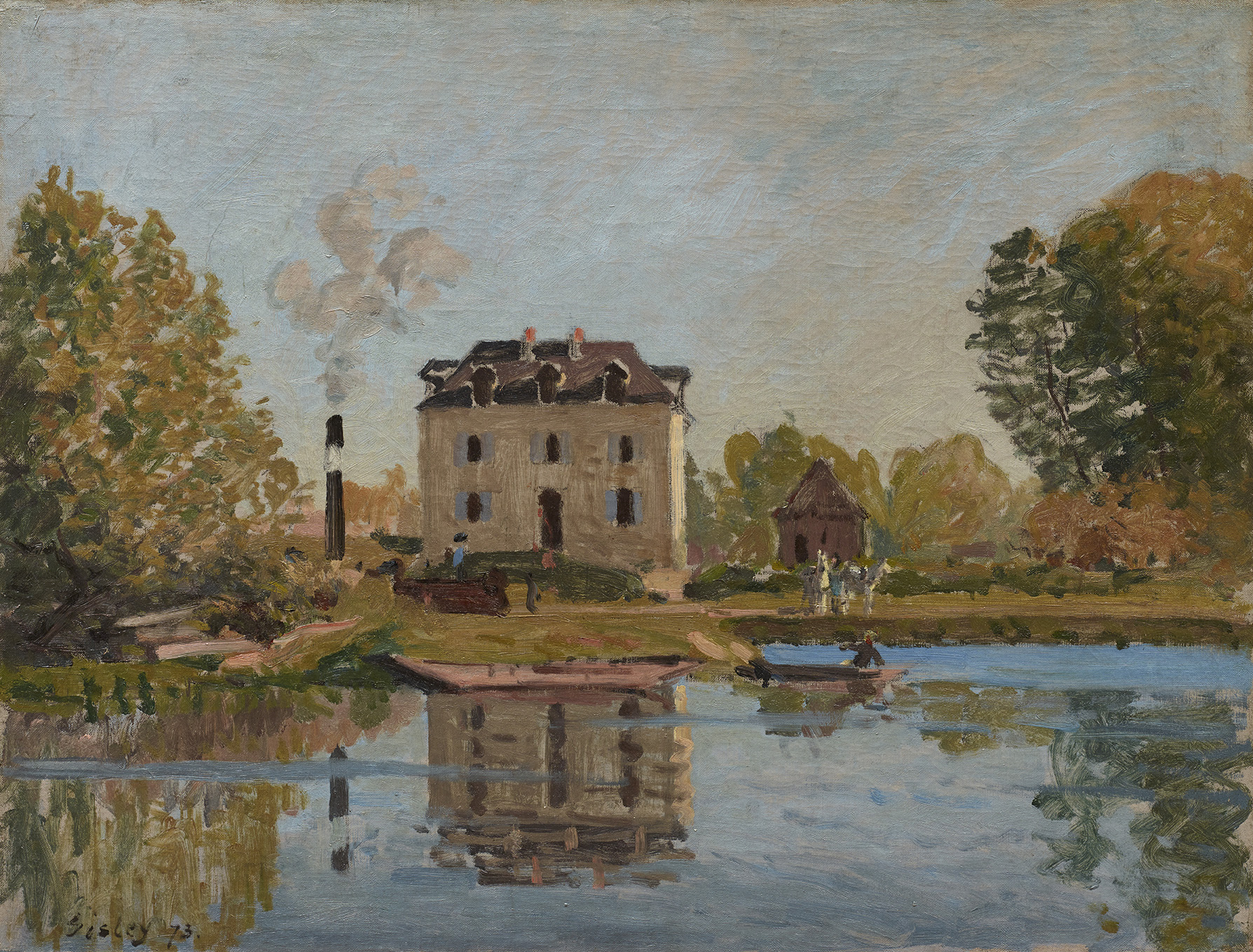
Oil on canvas
50 x 65.5 cm
1873
The Flood. Banks of the Seine, Bougival
It was very Sisley to be interested in such an unpretentious motif as a factory on the banks of the Seine. He has given us a traditional view of the motif but has worked experimentally with the reflection of the building and the trees in the water. The sketch-like Impressionist way of painting generates a highly atmospheric artwork.
Along with Impressionism the perception of nature changed, as we can see when we compare this with, e.g. the Barbizon School’s landscape paintings. Sisley and several of other Impressionist painters were interested in the factory motif as a sign of modern industrialization amidst nature. They presented an unproblematic, almost idyllic juxtaposition of nature and culture which is far from 20th century perception of industrialization as a polluting, nature-destroying element.
50.5 x 65.5 cm
1865
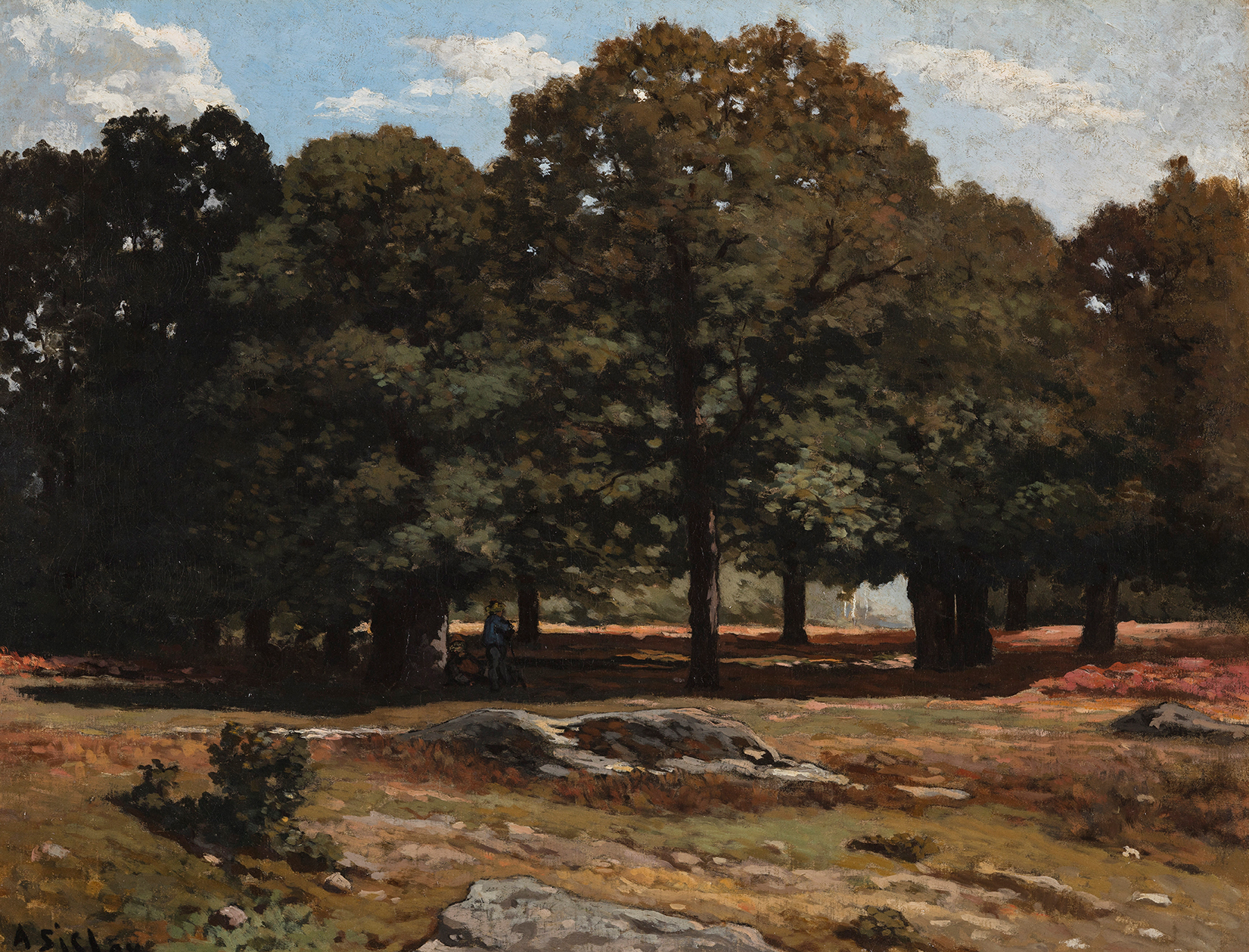
50,5 x 65,5 cm
1865
Avenue of Chestnut Trees at La Celle- Saint-Cloud
50 x 65 cm
1877
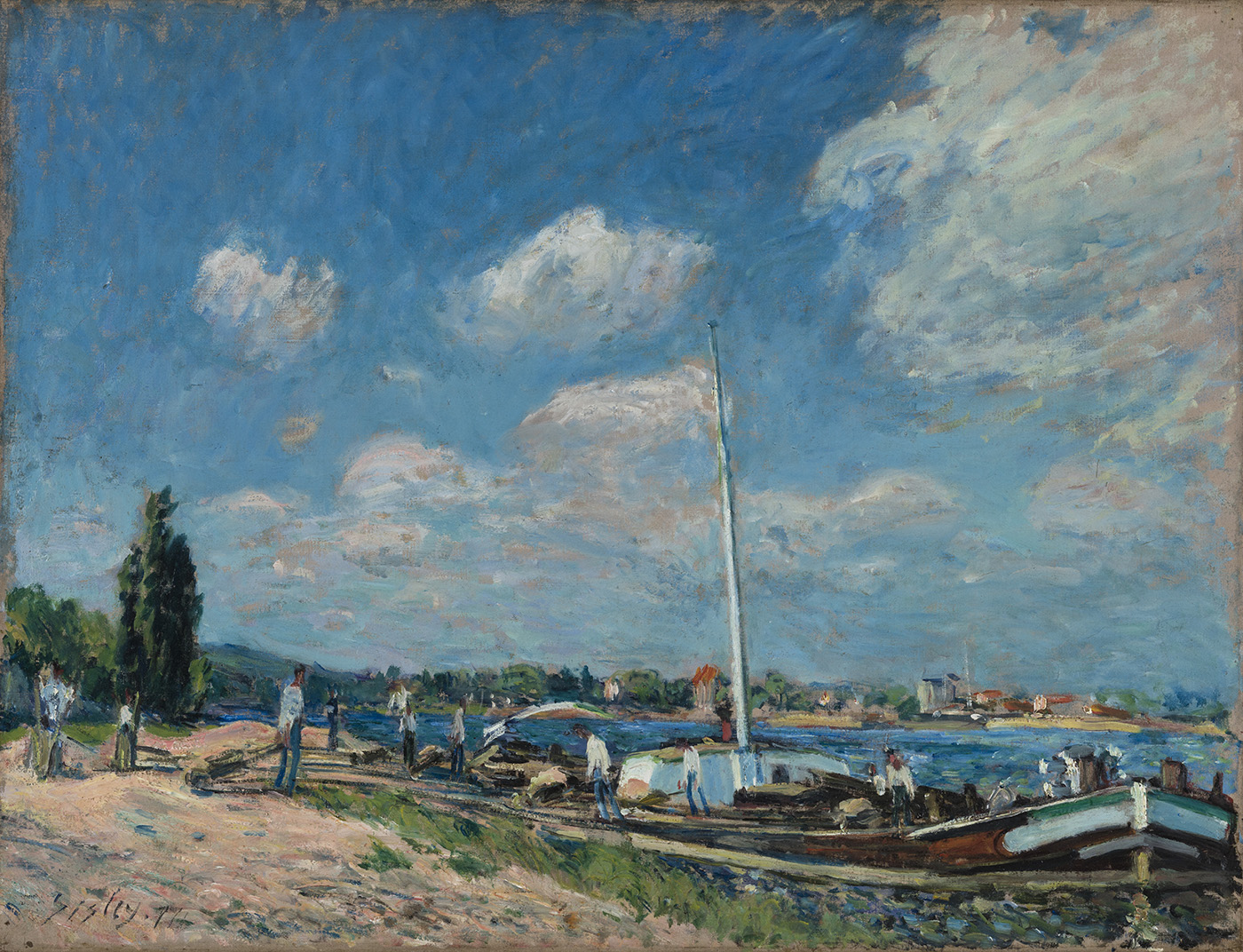
50 x 65 cm
1877
Unloading Barges at Billancourt
54 x 72.5 cm
1884
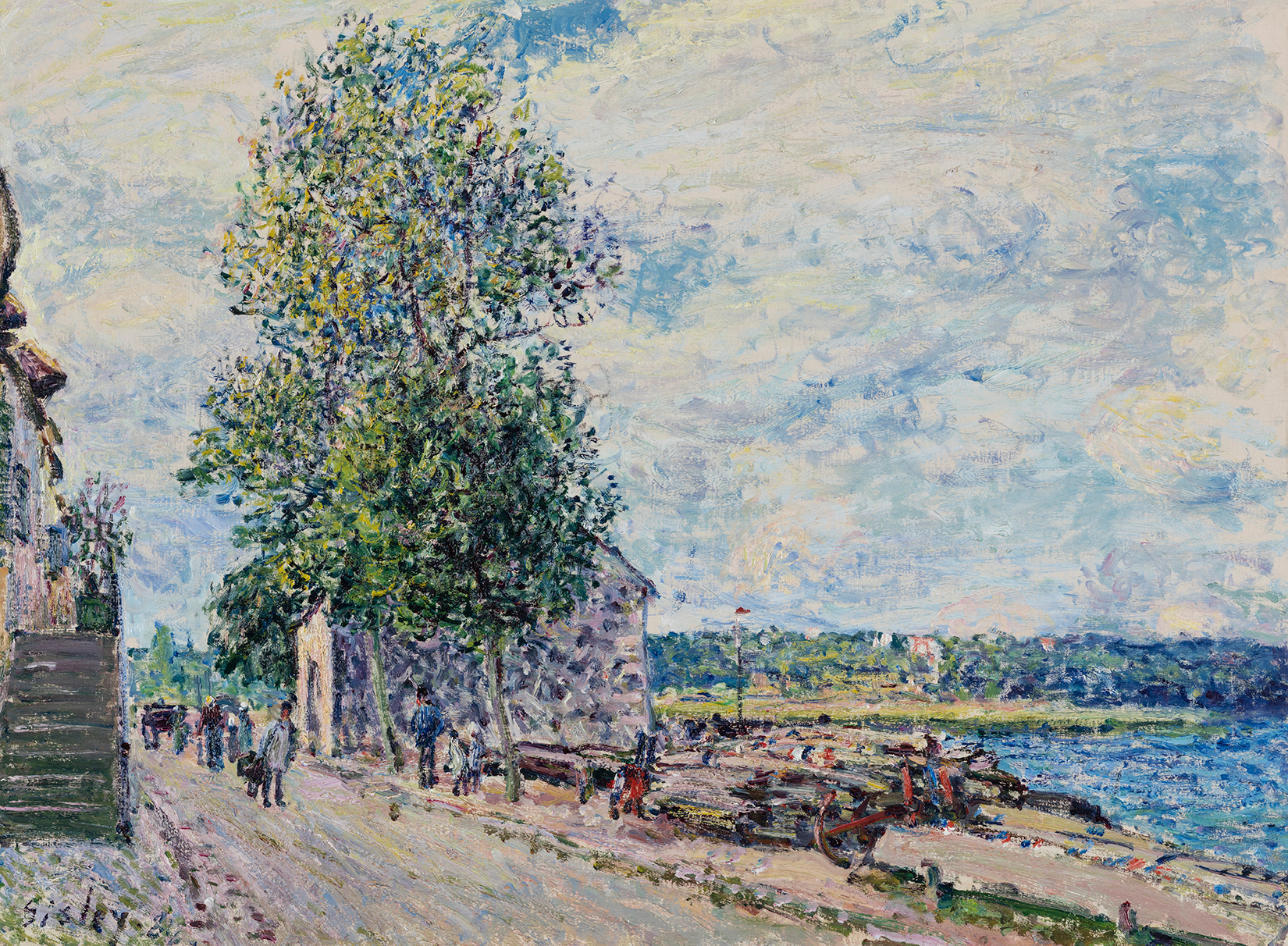
54 x 72.5 cm
1884
September Morning near Saint-Mammès and the Veneux-Nadon Hills
46 x 56 cm
1885
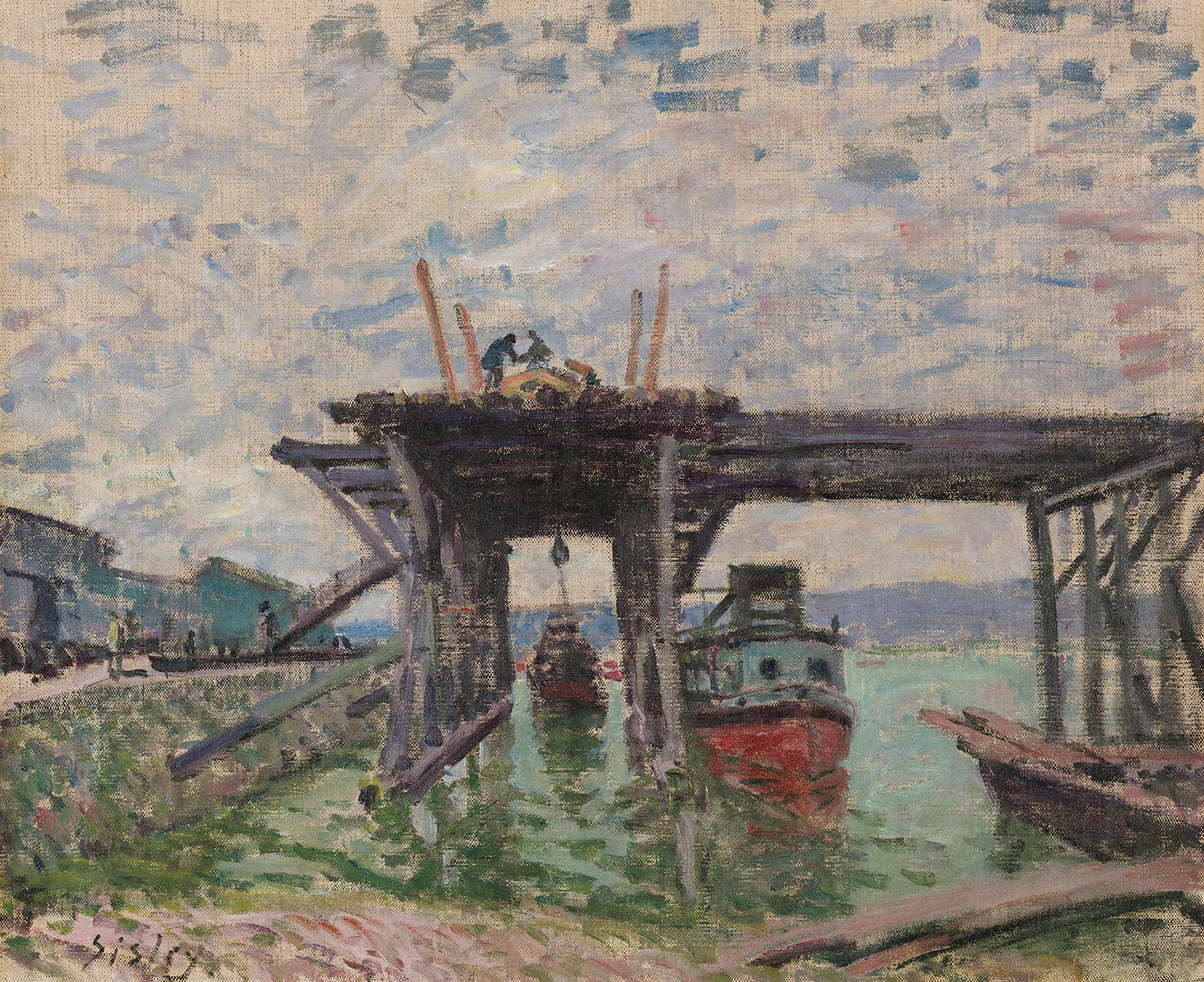
46 x 56 cm
1885
The River Boat Garage
54 x 65 cm
1896
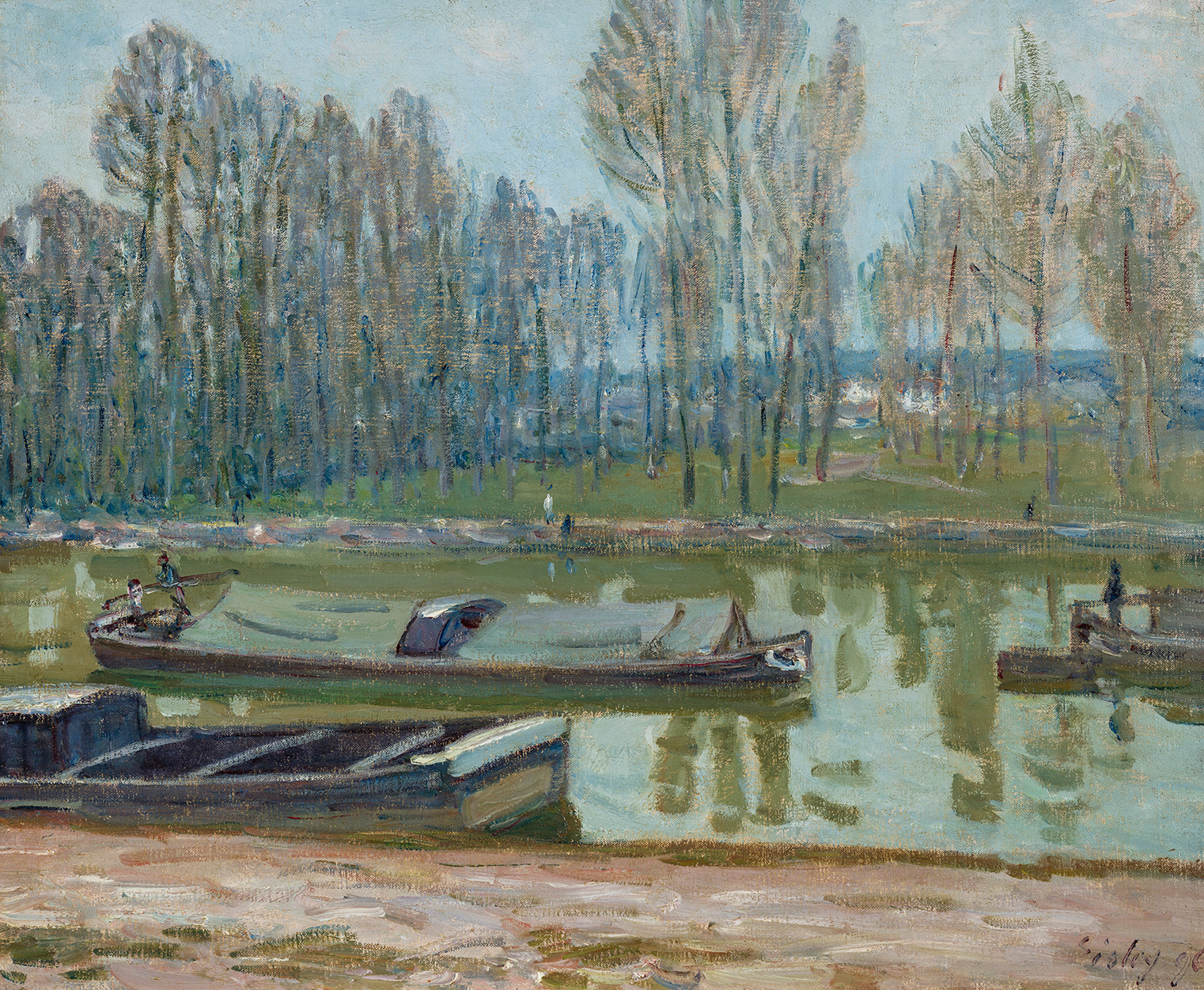
54 x 65 cm
1896